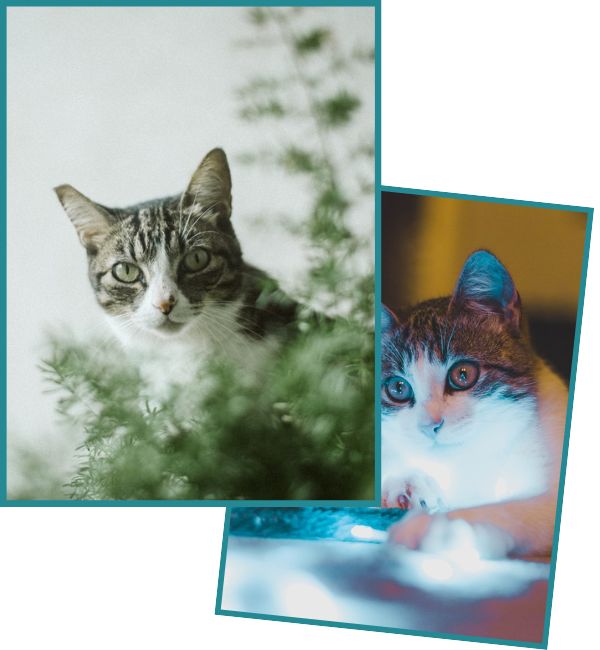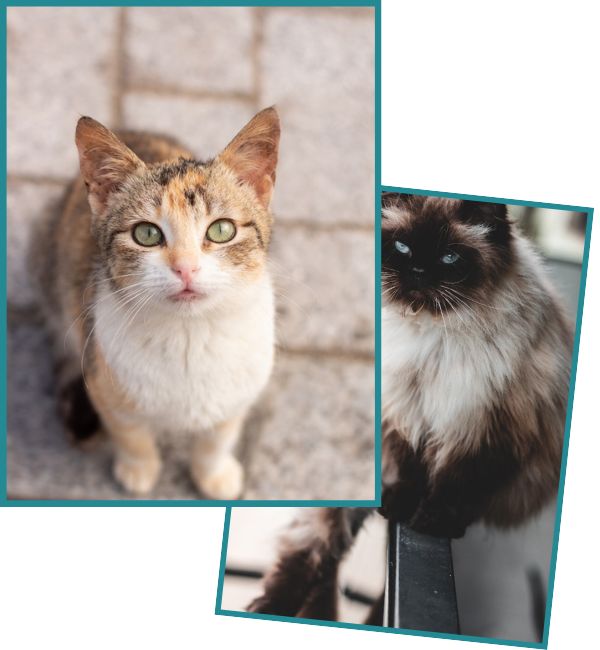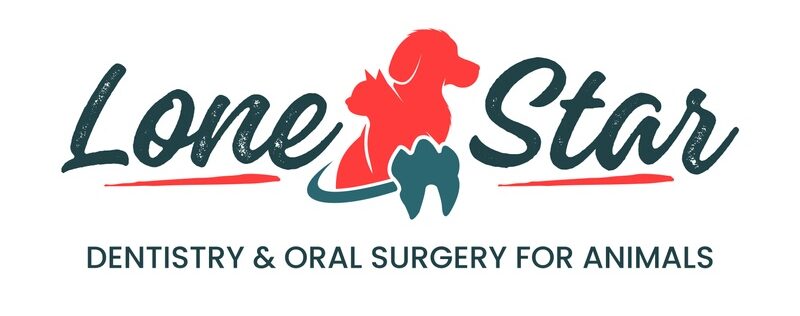Services
Pet Canine and Feline Periodontal Disease in the Greater Houston Area, TX
Pet Canine and Feline Periodontal Disease
in the Greater Houston Area

Periodontal disease is an infection of the tissues surrounding and supporting the teeth. The periodontal tissues are the gingiva, periodontal ligament, cementum, and alveolar bone. The primary etiologic agent for periodontal disease is plaque bacteria. Gram-positive aerobes are the first to adhere to the tooth and are found in healthy gingiva along with some facultative anaerobes.
As periodontitis progresses the bacteria change to more gram negatives, anaerobes, rods, filamentous, and motile bacteria. Plaque may be seen on the teeth prior to the development of gingivitis and appears as a white to gray soft material at the gingival margin. The first clinical sign of Periodontal disease is gingivitis, which is caused by inflammation.
If the defense system fails or is overcome by virulent strains of bacteria, inflammation will progress and cause a breakdown in the periodontal tissues resulting in a loss of attachment. Teeth will loosen and eventually be lost. It has long been suspected that a relationship exists between periodontal infection and disease of the heart, lungs, liver, kidneys, and brain.
Veterinary Periodontal Treatment
One veterinary dental prophylaxis or cleaning is not enough! It is important to understand that periodontal disease is an infection that can be controlled but not cured. Ongoing treatment of the dog or cat including professional cleanings and home care is needed to treat periodontal disease.
The first noticeable sign that a pet needs periodontal treatment is halitosis. After anesthetizing the pet, complete oral and periodontal examinations can be performed, and the teeth can be charted. Some of the more obvious findings are dental calculus or tartar on the teeth, red or bleeding gums, oral ulcers, retained deciduous teeth, loose teeth, missing teeth or broken teeth. Dental radiographs are utilized for periodontal assessment, treatment planning, and evaluation.
Periodontal treatment includes scaling, curettage, root planing, polishing, sulcus irrigation, fluoride treatment, and may even involve some extractions. Calculated guesses can be made during the awake exam, however, periodontal disease cannot be fully realized until the pet is evaluated under anesthesia.

Scaling or calculus removal is done with calculus removing forceps, sonic or ultrasonic scalers, and hand scalers. Ultrasonic scalers with periodontal inserts and curettes are the instruments used for subgingival cleaning and root planing. After calculus removal and sub-gingival cleaning are complete, the sulcus is irrigated with a chlorhexidine solution. Sulcus irrigation is performed to rinse any paste, calculus, or other debris from the pocket or sulcus. Once the teeth are clean they can be evaluated with a periodontal probe. The probe is gently placed in the sulcus or pocket and gently walked around the tooth to measure periodontal pockets. These measurements are recorded on a dental treatment chart for current and future evaluations. Polishing is the final smoothing of the crown and any exposed root of the tooth. A slow-speed handpiece with a prophy cup and a fine grit polishing paste or pumice is used to smooth the tooth surfaces. Fluoride is applied as a liquid, gel, varnish or pumice. Fluoride is effective as a bacteriostatic agent and is actually incorporated into the enamel. A Periodontal Therapeutic (Perioceutic) is another method of treating the infection residing in the periodontal pocket. The antibiotic is combined with a biodegradable vehicle so that it can be placed in the periodontal pocket where it will remain for several days.
Extracting teeth may be a part of periodontal treatment if the teeth have lost most of their supporting tissues. Other reasons for extractions include retained deciduous (baby) teeth, crowding of the teeth, or too many teeth. Another consideration for extracting diseased teeth is whether an owner will be able to brush the teeth or administer periodontal care and home treatment to their pet. If an owner is able to maintain good oral hygiene for their pet and will bring their pet for frequent treatments, some of the questionable teeth can be saved. An important part of treatment planning is to find out what an owner is willing and able to do in regard to home care.
